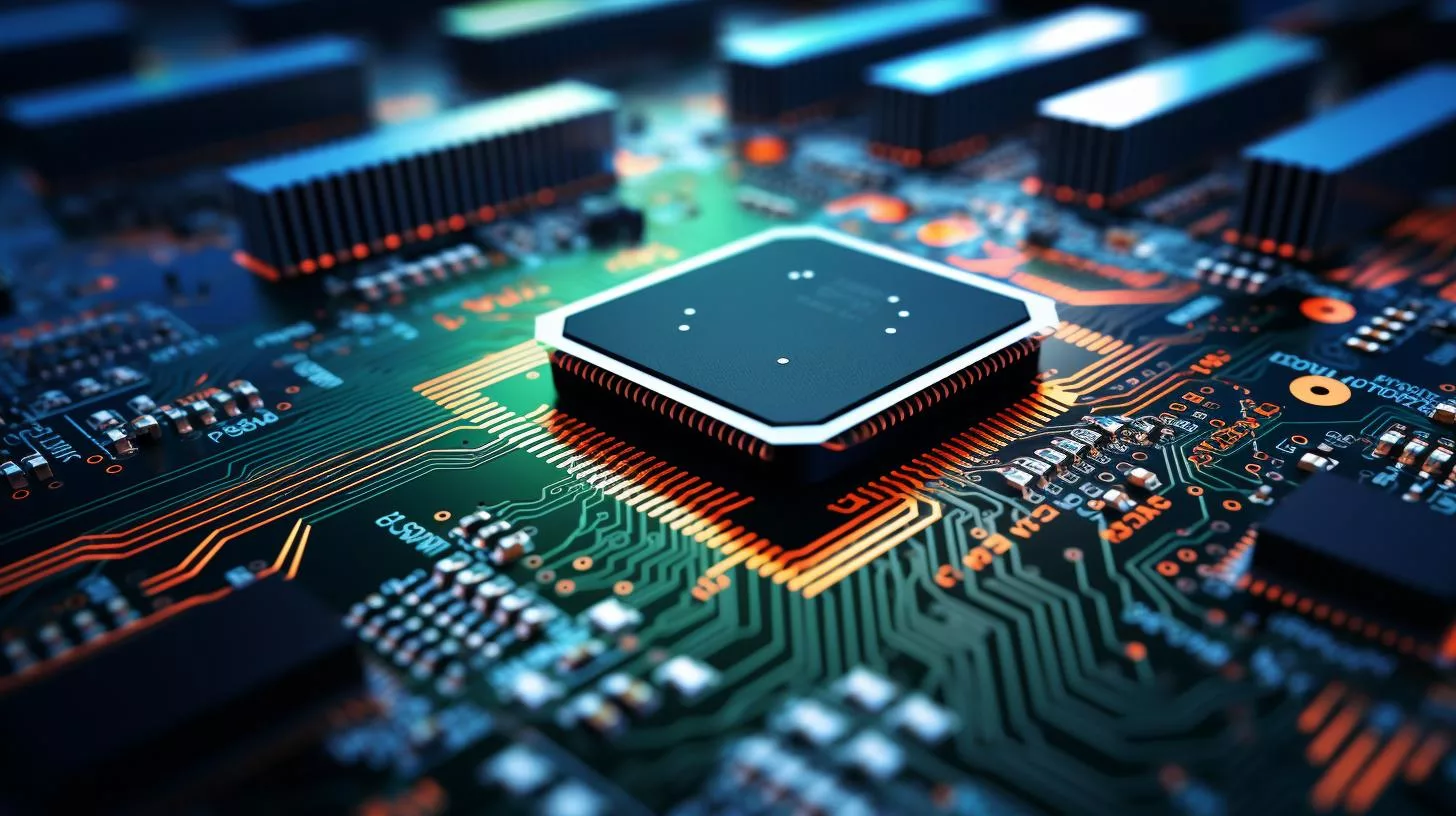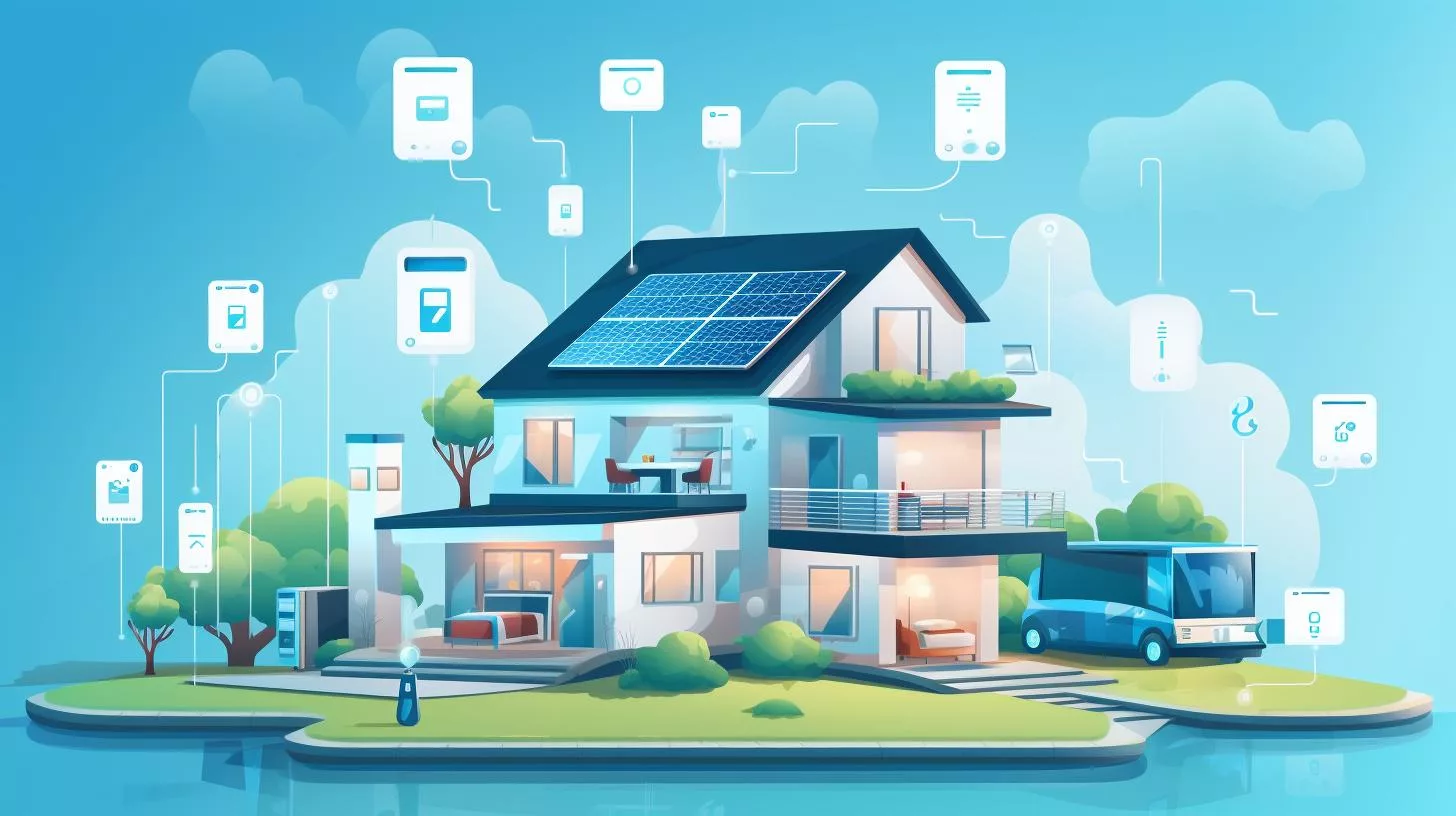How IoT is Changing the Tech Landscape
Learn about how IoT is changing the tech landscape by discovering:
– What IoT is and its components
– The functioning of IoT and its applications
– The benefits, challenges, and risks of IoT
– The growth potential, trends, and technologies of IoT
Definition
Internet of Things (IoT) is a network of interconnected devices that communicate with each other and share data. These devices can be anything from smartphones and smartwatches to household appliances, cars, and industrial machines. IoT technology is becoming increasingly popular as it allows for seamless communication between devices, making them more efficient and productive.

Components
IoT comprises of three main components: sensors, connectivity, and data processing. Sensors are embedded in devices, enabling them to collect data and monitor their surroundings. Connectivity allows devices to communicate with each other and share data over the internet. Data processing involves analyzing the collected data to derive valuable insights.
History
IoT technology has been around for a while, with the first internet-connected appliance, a Coca-Cola vending machine, being created in 1982. However, it wasn’t until the early 2000s that IoT gained popularity, with the advent of smartphones and other smart devices. Since then, IoT technology has evolved rapidly, with an increasing number of devices becoming connected to the internet.
Functioning of IoT
Sensors and Connectivity
IoT devices are equipped with various sensors, including temperature sensors, motion sensors, and light sensors. These sensors collect data and send it to the cloud for further analysis. The connectivity aspect of IoT technology is what allows devices to communicate with each other. This can be achieved through Wi-Fi, Bluetooth, or other wireless protocols.
Data Collection and Analysis
Data collected by IoT devices is processed and analyzed to derive insights that can be used to improve efficiency and productivity. This data can also be used to predict future events, enabling businesses to make better decisions.
Communication between Devices
Communication between IoT devices can be achieved through various means, including peer-to-peer communication and cloud communication. Peer-to-peer communication involves devices communicating with each other directly, while cloud communication involves devices communicating with a central server.

IoT Applications
Smart Homes
One of the most popular applications of IoT technology is in smart homes. IoT devices such as smart thermostats, smart lighting, and smart security systems are becoming increasingly popular, allowing homeowners to control their homes remotely.
Healthcare
IoT technology is also making its way into the healthcare industry, with devices such as wearable fitness trackers and smart medical devices becoming more common. These devices can monitor vital signs and provide real-time data to healthcare professionals, improving patient outcomes.
Transportation
IoT technology is being used to improve transportation systems, including self-driving cars, traffic monitoring, and fleet management. These applications are helping to reduce traffic congestion and improve safety on the roads.
Agriculture
IoT technology is also being used in agriculture to improve crop yields and reduce waste. IoT devices can be used to monitor soil moisture levels, temperature, and other environmental factors, allowing farmers to make better decisions and optimize their crop yield.

Industrial Internet of Things (IIoT)
The Industrial Internet of Things (IIoT) involves the use of IoT technology in industrial settings, such as manufacturing plants and factories. IIoT devices can be used to monitor machines and equipment, improving efficiency and reducing downtime.
Personal Experience: How IoT Revolutionized My Farming Business
As a farmer, I have always been looking for ways to increase efficiency and profitability. When I first heard about IoT, I was skeptical about how it could help my farming business. However, after a few years of using IoT devices, I can say that it has revolutionized the way I manage my farm.
I installed sensors in my fields that collect real-time data on soil moisture, temperature, and nutrient levels. This data is then transmitted to my smartphone, allowing me to monitor my crops from anywhere. With this information, I can make informed decisions on when to water, fertilize, or harvest my crops. This has resulted in a significant increase in yield and a reduction in waste.
IoT has also helped me automate many tasks on my farm. For example, I have installed a smart irrigation system that automatically adjusts water usage based on the moisture levels in the soil. This has reduced my water usage by 30% and saved me a lot of time.
Thanks to IoT, I can now manage my farm more efficiently and make better decisions. It has also allowed me to save time and money, while increasing my profits. I believe that IoT has a lot of potential for the agriculture industry, and I am excited to see what the future holds.

Benefits of IoT
Efficiency and Productivity
IoT technology can improve efficiency and productivity by automating processes, reducing downtime, and improving decision-making.
Cost Savings
IoT technology can also help to reduce costs by improving efficiency, reducing waste, and optimizing resources.
Improved Decision-making
IoT technology can provide valuable insights that can be used to make better decisions, improving business outcomes.
Enhanced Customer Experience
IoT technology can also enhance the customer experience by providing personalized services and improving communication between businesses and customers.

Challenges and Risks of IoT
Security
One of the biggest challenges facing IoT technology is security. With so many devices connected to the internet, there is a risk of cyber attacks and data breaches. IoT devices are also often vulnerable to hacking, as they may not have proper security measures in place.
Privacy
Privacy is also a concern when it comes to IoT technology. With so much data being collected and analyzed, there is a risk that personal information could be compromised.
Interoperability
Interoperability is another challenge facing IoT technology. With so many different devices and protocols, it can be difficult to ensure that they can all communicate with each other seamlessly.
Lack of Standardization
The lack of standardization is also a challenge when it comes to IoT technology. With so many different devices and protocols, it can be difficult to ensure that they are all compatible with each other.
Future of IoT
Growth Potential
The IoT market is expected to continue growing rapidly, with an increasing number of devices becoming connected to the internet. This growth is expected to be driven by the increasing demand for smart homes, healthcare devices, and IIoT applications.
Trends and Technologies
Some of the trends and technologies that are expected to shape the future of IoT include 5G networks, edge computing, and artificial intelligence. These technologies will enable faster connectivity, more efficient data processing, and better decision-making.
Societal and Economic Impact
The widespread adoption of IoT technology is expected to have a significant societal and economic impact. IoT technology has the potential to transform industries, improve quality of life, and create new business opportunities.
Conclusion
In conclusion, IoT technology is changing the tech landscape, with an increasing number of devices becoming connected to the internet. IoT technology has the potential to improve efficiency, reduce costs, and enhance decision-making. However, there are also challenges and risks associated with IoT, including security, privacy, interoperability, and lack of standardization. Despite these challenges, the future of IoT looks bright, with an increasing number of devices becoming connected to the internet and new technologies shaping the future of IoT.
FAQs
What is IoT?
IoT stands for Internet of Things, a network of interconnected devices that communicate with each other and share data.
What are some applications of IoT?
Some applications of IoT include smart homes, healthcare, transportation, agriculture, and the Industrial Internet of Things (IIoT).
What are the benefits of IoT?
Some benefits of IoT include improved efficiency and productivity, cost savings, improved decision-making, and enhanced customer experience.
What are the risks of IoT?
Risks associated with IoT include security, privacy, interoperability, and lack of standardization.
What is the future of IoT?
The future of IoT looks bright, with an increasing number of devices becoming connected to the internet and new technologies shaping the future of IoT.
